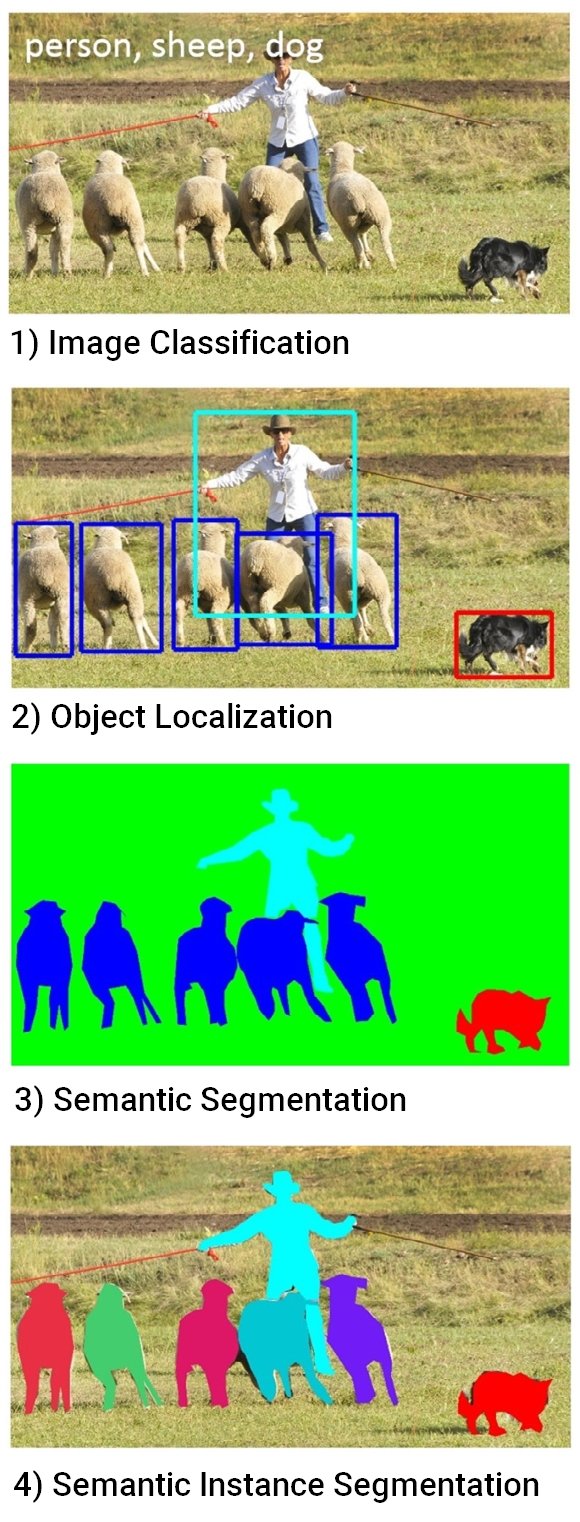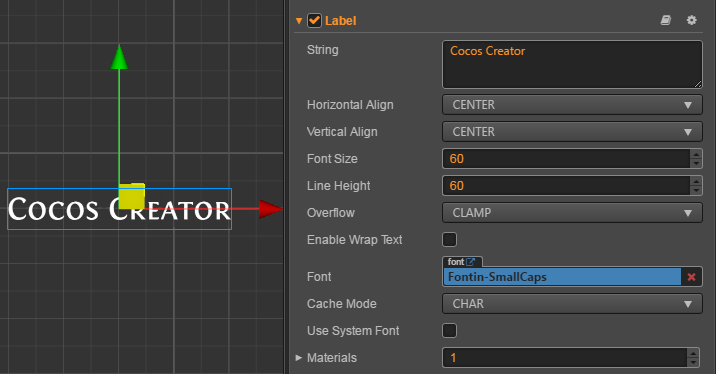44 coco dataset labels list
COCO - Common Objects in Context info@cocodataset.org. Home; People The COCO Dataset: Best Practices for Downloading ... label_types: a list of types of labels to load. Values are ("detections", "segmentations"). By default, all labels are loaded but not every sample will include each label type. If max_samples and...
How To Create a Custom COCO Dataset from Scratch | by ... In the sidebar, click "Labels", then click the green plus sign to create a new label. Name your label whatever you want, don't worry about the Custom ID section, set the color and parent if ...

Coco dataset labels list
An Introduction to the COCO Dataset - Roboflow Blog The COCO dataset contains multiple computer vision tasks, listed here in descending order of commonality: Object Detection - Objects are annotated with a bounding box and class label Semantic Segmentation - The boundary of objects are labeled with a mask and object classes are labeled with a class label cite COCO format - Rekognition annotations - a list of annotations (including bounding boxes) that are present in all images in the dataset. categories - a list of label categories. To create a Custom Labels manifest, you use the images , annotations, and categories lists from the COCO manifest file. The other sections ( info, licences ) aren't required. Understanding COCO Dataset | Engineering Education (EngEd ... COCO dataset provides large-scale datasets for object detection, segmentation, keypoint detection, and image captioning. We will explore the above terminologies in the upcoming sections. It contains over 80 object categories with over 1.5 million object instances for context recognition, object detection, and segmentation. History of COCO
Coco dataset labels list. What Object Categories / Labels Are In COCO Dataset ... The names in the list include Pascal, ImageNet, SUN, and COCO. In this post, we will briefly discuss about COCO dataset, especially on its distinct feature and labeled objects. tl;dr The COCO dataset labels from the original paper and the released versions in 2014 and 2017 can be viewed and downloaded from this repository. A Dataset with Context Introduction to the COCO Dataset - OpenCV The Common Object in Context (COCO) is one of the most popular large-scale labeled image datasets available for public use. It represents a handful of objects we encounter on a daily basis and contains image annotations in 80 categories, with over 1.5 million object instances. Bounding boxes augmentation for object detection Bounding boxes coordinates in the coco format for those objects are [23, 74, 295, 388], [377, 294, 252, 161], and [333, 421, 49, 49]. An example image with 3 bounding boxes from the COCO dataset. 1. You can pass labels along with bounding boxes coordinates by adding them as additional values to the list of coordinates.¶ Create COCO Annotations From Scratch - Immersive Limit The "images" section contains the complete list of images in your dataset. There are no labels, bounding boxes, or segmentations specified in this part, it's simply a list of images and information about each one. Note that coco_url, flickr_url, and date_captured are just for reference.
How to Filter the COCO Dataset by Category - Immersive Limit For example, if you want to filter the COCO dataset to only contain people and cars, this guide will help. Note that this guide is for instances, not the other types of annotations (e.g. stuff). Let us know if you are interested in that. Filtering with COCO-Manager. Extracting bounding boxes and category labels in MS-COCO ... I am working with MS-COCO dataset and I want to extract bounding boxes as well as labels for the images corresponding to backpack (category ID: 27) and laptop (category ID: 73) categories, and store them into different text files to train a neural network based model later.. I have already extracted the images corresponding to the aforementioned two categories and have created empty annotation ... Create your own COCO-style datasets - waspinator The format COCO uses to store annotations has since become a de facto standard, and if you can convert your dataset to its style, a whole world of state-of-the-art model implementations opens up. This is where pycococreator comes in. pycococreator takes care of all the annotation formatting details and will help convert your data into the COCO ... COCO Dataset - Hub | Activeloop The COCO dataset (Common Objects in Context) advances object recognition by placing the images of an object recognition dataset in the context of scene understanding. This is accomplished by collecting images of complicated daily scenes having ordinary objects in their natural context.
How to work with object detection datasets in COCO format ... In order to load your COCO formatted dataset, you could write a parser for the JSON labels file, but really you should just use one of the various tools out there that will load it for you. Two of the best tools for this are the official COCO APIs and FiftyOne. There are official COCO APIs for Python, Lua, and Matlab. Conceptual Captions Dataset - GitHub Up to this point, the resource most used for this task was the MS-COCO dataset, containing around 120,000 images and 5-way image-caption annotations (produced by paid annotators). Google's Conceptual Captions dataset has more than 3 million images, paired with natural-language captions. Transforming COCO datasets - Rekognition COCO is a format for specifying large-scale object detection, segmentation, and captioning datasets. This Python example shows you how to transform a COCO object detection format dataset into an Amazon Rekognition Custom Labels bounding box format manifest file. This section also includes information that you can use to write your own code. How to use COCO for Object Detection To get annotated bicycle images we can subsample the COCO dataset for the bicycle class (coco label 2). First, we clone the repository and add the folders images and annotations to the root of the repository. Then we can use the COCO api to get a list of all image_ids which contain annotated bicycles.
COCO Dataset | Papers With Code The MS COCO (Microsoft Common Objects in Context) dataset is a large-scale object detection, segmentation, key-point detection, and captioning dataset. The dataset consists of 328K images. Splits: The first version of MS COCO dataset was released in 2014. It contains 164K images split into training (83K), validation (41K) and test (41K) sets. In 2015 additional test set of 81K images was ...
Train Custom Data 📌 - YOLOv5 Documentation Organize your train and val images and labels according to the example below. In this example we assume /coco128 is next to the /yolov5 directory. YOLOv5 locates labels automatically for each image by replacing the last instance of /images/ in each image path with /labels/. For example: dataset/images/im0.jpg # image dataset/labels/im0.txt ...
Labels for the Mobilenet v2 SSD model trained with the ... Labels for the Mobilenet v2 SSD model trained with the COCO (2018/03/29) dataset. - coco_labels.txt
[How To] Prepare and Upload Coco Labels - DataGym The Coco dataset comes with its very own label format for each of the label categories: Detection, Captioning, Keypoints, Stuff, Panoptic. The Coco import function within the DATA GYM Python Package currently supports detection and captioning. upload_dict = coco.get_datagym_label_dict (image_ids_dict) import pprint pprint.pprint (upload_dict [ 0 ])
Yolo-to-COCO-format-converter - GitHub Yolo-to-COCO-format-converter. When you use Yolo-model, you might create annotation labels with Yolo-mark. For example, obj.names - example of list with object names; train.txt - example with list of image filenames for training Yolo model; train/ - example of folder that contain images and labels *.jpg : example of list of image
COCO Dataset - DeepAI The COCO dataset has been developed for large-scale object detection, captioning, and segmentation. The 2017 version of the dataset consists of images, bounding boxes, and their labels Note: * Certain images from the train and val sets do not have annotations.
cocostuff/labels.md at master · nightrome/cocostuff - GitHub Labels in COCO-Stuff Below we present an overview of the labels in COCO-Stuff, as well as their indices and descriptions. We also include a preview image for each class that shows 4 example images with regions (i.e. connected components in the label map - we do not have instance annotations for stuff classes) of the particular class.
CVAT Integration — FiftyOne 0.15.1 documentation Basic recipe¶. The basic workflow to use CVAT to add or edit labels on your FiftyOne datasets is as follows: Load a labeled or unlabeled dataset into FiftyOne. Explore the dataset using the App or dataset views to locate either unlabeled samples that you wish to annotate or labeled samples whose annotations you want to edit
What is the COCO Dataset? What you need to know in 2022 ... List of the COCO Keypoints The COCO keypoints include 17 different pre-trained keypoints (classes) that are annotated with three values (x,y,v). The x and y values mark the coordinates, and v indicates the visibility of the key point (visible, not visible).

How to create custom COCO data set for instance segmentation | by Chengwei Zhang | Data Driven ...
GitHub - amikelive/coco-labels: The labels for object ... Common Objects in Context (COCO) Labels List of object labels / categories The labels are divided into three sections: Original COCO paper COCO dataset release in 2014 COCO dataset release in 2017 Since the labels for COCO datasets released in 2014 and 2017 were the same, they were merged into a single file.
solaris.data.coco — solaris 0.4.0 documentation This can be:: 1. a string path to an image, 2. the path to a directory containing a bunch of images, 3. a list of image paths, 4. a dictionary corresponding to COCO-formatted image records, or 5. a string path to a COCO JSON containing image records. If a directory, the `recursive` flag will be used to determine whether or not to descend into ...
coco | TensorFlow Datasets COCO is a large-scale object detection, segmentation, and captioning dataset. Note: * Some images from the train and validation sets don't have annotations. * Coco 2014 and 2017 uses the same images, but different train/val/test splits * The test split don't have any annotations (only images).
How to Train YOLO v5 on a Custom Dataset - Paperspace Blog YOLO, or You Only Look Once, is one of the most widely used deep learning based object detection algorithms out there. In this tutorial, we will go over how to train one of its latest variants, YOLOv5, on a custom dataset.
List of MS COCO dataset classes · GitHub List of MS COCO dataset classes Raw coco_classes.txt This file contains bidirectional Unicode text that may be interpreted or compiled differently than what appears below. To review, open the file in an editor that reveals hidden Unicode characters. Learn more about bidirectional Unicode characters ...











Post a Comment for "44 coco dataset labels list"